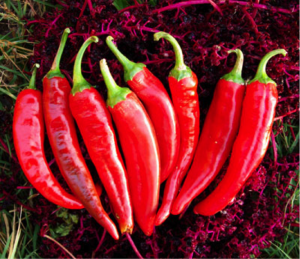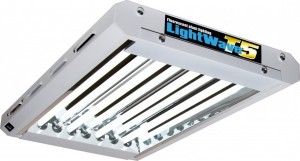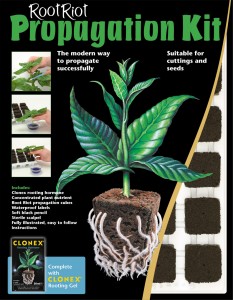Grow Your Own Guajillo Chile Pepper
Filed Under (Chilli Growing) by Chilli Willy on 17-11-2014
Tagged Under : chilli growing, chilli growing instructions, grow your own chillies, Grow Your Own Guajillo Chile Pepper
For Chilli-Willy
By Ramon L. Manego
November 7, 2014
Guajillo or Mirasol pepper is a rare variety of chile that is said to have originated in Mexico. It is typically an annual vegetable that is very easy to grow and requires minimal care. Guajillo is smaller than other Anaheim chile varieties, but is much richer and milder in flavor and it is the second most commonly used pepper in Mexican cooking. The plant grows to a height of 3 feet, producing fruits that are 4 to 5 inches long and with medium heat.
Let’s start planting. Guajillo pepper is best planted from seed indoors in temperate climates. The best time to start your seedling indoors is early in spring. Fill your seed starting container with good quality potting mix and place 2 to 3 seeds in a ¼” deep hole. In order to germinate, the seedlings must have a steady temperature of between 70 -85 degrees F. You can use a heating pad underneath the container if your home is drafty.
Water your plants lightly, keeping the soil moist but not soggy and never let the soil dry completely or the germination process will fail. Germination will normally take about two to three weeks.
Once the seeds have sprouted, take them outside for a few hours every day to harden them, and once the plant has grown 4-6 inches, they are ready for transplanting outside in your garden. Keep in mind that Guajillo pepper is tender, so you need to make sure that the temperature is mild when you start transplanting.
Set your plants where they can get full sunshine. The soil should be well-draining with a 7 to 8 pH level, a preferred soil condition of Guajillo pepper. Set them at least 18 inches apart to give them good air circulation when they have matured. During hot or dry weather, it is best that you mulch your pepper plants with organic materials to keep the soil from drying up fast, and help prevent weeds from setting in. Apply diluted, water soluble fertilizer about four weeks after transplanting.
Your Guajillo pepper will start fruiting in about 75 days from transplanting, and you can start picking them while they are still green. Always use a sharp knife or scissors when removing the peppers and leave about an inch of stem attached. You can also leave the fruit to ripen and dry to make your own Guajillo chile powder. Have fun gardening!
If you want to learn more about chilli growing, then have a look at our chilli growing guide.
About Ramon
Ramon Mañego writes for Organics Superfoods Store. Organic Superfoods Store is an online store, based in Florida serving their customers since 2012.
Find out more at:
https://organicsfs.com
https://www.facebook.com/superfoodsstore
https://plus.google.com/+Organicsfs
https://www.pinterest.com/organicsfs
https://twitter.com/organicsfs




